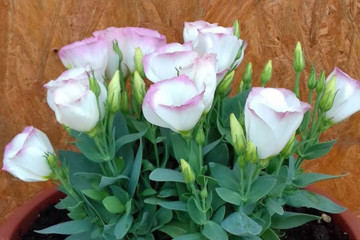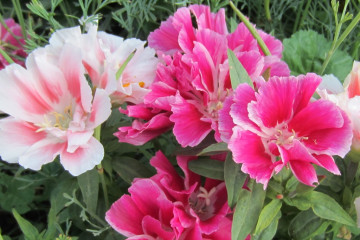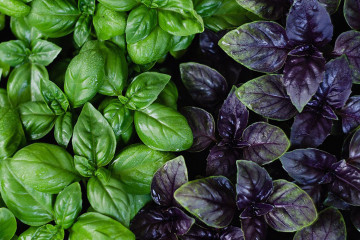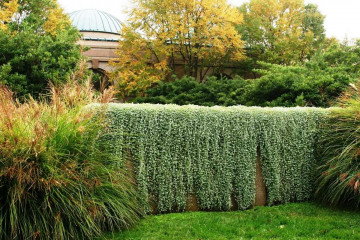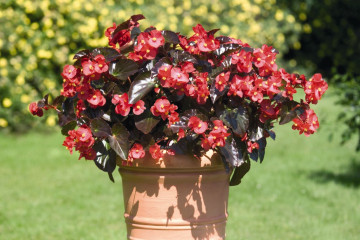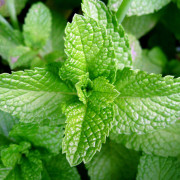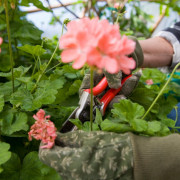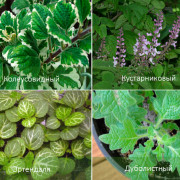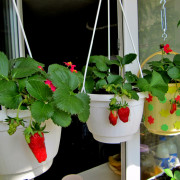Cineraria silvery - growing from seeds at home
Content:
Cineraria silvery or Japanese gladiolus is a popular ornamental plant that is actively used by landscape designers to create original compositions and amateur gardeners to decorate their garden. Before you start growing and breeding this graceful culture, you should carefully study its features, the subtleties of planting and care.
Description of silver cineraria (seaside)

Cineraria silvery
The homeland of silver cineraria is the Mediterranean. Despite the climate of these countries, the plant does not feel well in hot, sultry weather, it loves cool conditions more.
The name of the culture from the Latin language is translated as "ashen". This is the most appropriate description of the plant because of its silvery leaves, which are strikingly different from the usual green herbs in the flower bed.
Plant characteristics
Cineraria silvery is a herbaceous plant that belongs to the Astrov family, the genus Krestovnik. It grows wild in tropical Africa and the island of Madagascar. The culture is perennial, but in the middle latitudes it is cultivated as an annual.

Plant appearance
The bushes of the original culture up to 25 cm in height are decorated with unusual openwork, slightly pubescent foliage. Cineraria flowers are yellow, grow on the tops of the shoots. But many gardeners cut them because they spoil the aesthetic appearance of the flower bed.
As the plant develops, it forms a dense carpet, the height of which can be adjusted. Therefore, it is used as the main background for joint plantings with bright, abundantly flowering crops.
Common types
Gardeners prefer to grow different types of crops to create exquisite flower arrangements in their backyard.
Cineraria bloody (hybrid)
Cineraria hybrid is valued for its abundant flowering. Its foliage has no special decorative features. The variety is often grown as an annual crop. The plant has a rather intimidating name, but it is actually a delicate crop with vibrant and attractive flowers.

Cineraria bloody
Cineraria graceful
A large plant (60-70 cm), recommended for growing only in garden plots, since it is not adapted to indoor conditions. Shrubs are well branched, round in shape, form double flowers and foliage with sticky trichomes.
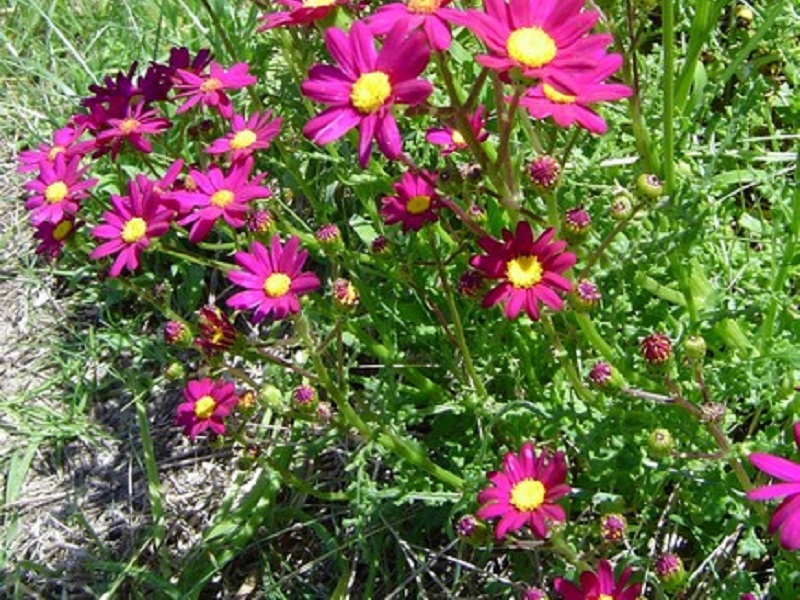
Cineraria graceful
The cultivars that are most popular with horticulturists
Popular varieties of Japanese gladiolus that can often be found in flower beds include:
Silver Dust (Silverdust)
A perennial shrub of small size, up to 25-30 cm in height.Cineraria Silverdust has silvery-white leaves with toothed edging. The name is justified, since the plant looks like it has been crushed by silver dust. Cineraria Silver Dust grows well in sunny areas and prefers moderate moisture.
Cirras
The plant has a height not exceeding 30-35 cm. It has large, solid leaves without cuts, oval in shape, with small notches along the edges. In the early stages of the growing season, they acquire a pale white hue, but over time they become almost white.
Andromeda
Miniature and neat variety. Its pinnately-divided leaves up to 15 cm long are covered with silvery felt from below. Blooms in small inflorescences in August. The plant prefers sunny places, fertile and not too moist soil.
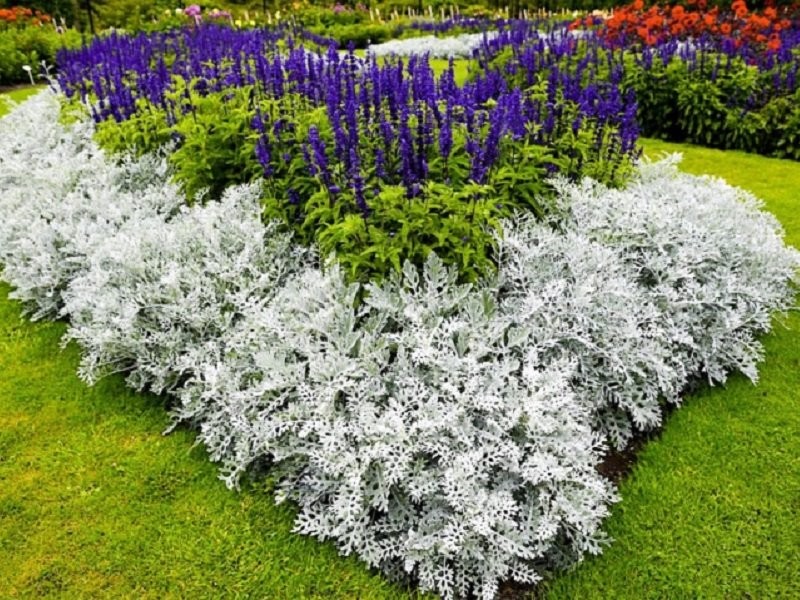
Cineraria in landscape design
Candyance
According to the description, the shrub herb can grow up to 25 cm in length. Densely growing foliage is colored silver with a bluish tint. The culture is not demanding on soil fertility, grows well in moderately humid sunny flower beds, shade-tolerant.
Diamond powder
The variety is a rosette or shrub-shaped herbaceous plant. The maximum height of Marine cineraria is 20 cm. Contrasting, silvery-ash leaves have an elongated shape and abundant section.
How cineraria multiplies
The desire to cultivate cineraria appears among many gardeners, since it is quite an interesting, exciting activity. There are several ways to replenish the collection of garden plants and create original landscape compositions: with the help of seeds, transplanting cuttings and dividing the bush.
Growing from seeds
Growing cineraria from seeds is the most productive option for obtaining new plant seedlings, which requires a lot of time and effort. To transplant young seedlings into open ground in May-June, you should start growing seedlings in greenhouse conditions from December.
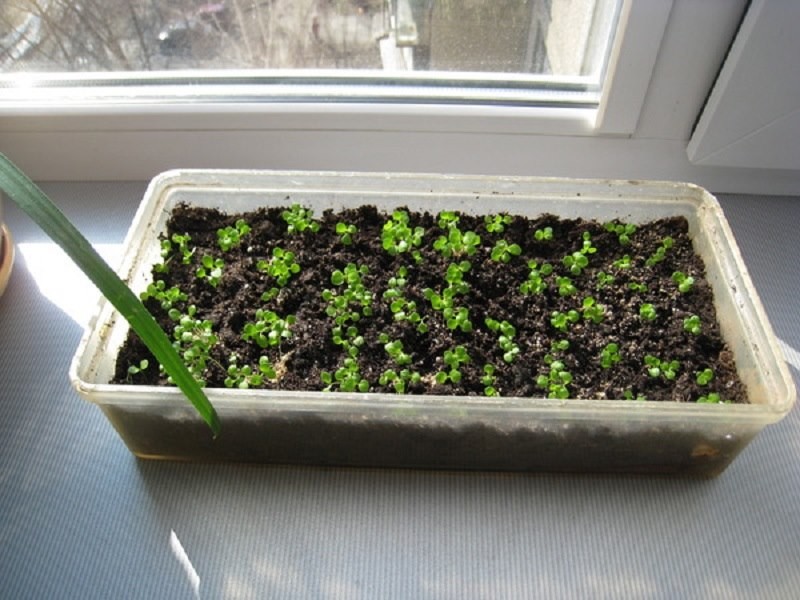
Seedlings of cineraria
First you need to prepare a container for sowing seeds. Loose and fertile garden soil is suitable for the cultivation of cineraria. You can use a special substrate purchased from a flower shop, mixed with sand in equal proportions. Fill pots or small containers with soil mixture, moisten and tamp.
Self-collected cineraria seeds have excellent germination. It is better to sow them in previously prepared containers with soil, evenly spreading them over the surface and sprinkling with a small layer of sand or cover with damp paper. The container must additionally be covered with glass to protect it from strong solar radiation.
The sprouts should appear as early as the second week after planting. During this period, it is important to regularly moisturize them with a spray bottle. All covering material must be removed. Maintain a temperature regime of +25 degrees.
The pick is carried out after the stage of formation of two true leaves. Plants should be transplanted into prepared and well-fertilized soil. A young seedling can be sent to a flower bed in early June.
Planting cuttings
To breed a crop with cuttings, you should prepare material for planting in the summer. It is in the summer that cineraria enters the phase of active vegetative growth. For cuttings, cut off the upper parts of the stems 10 cm long, place them by a third in a container with a mixture of garden soil and sand, pre-treated in a growth stimulator. It is important to provide them with greenhouse conditions, regular watering. After rooting, expose to fresh air daily, gradually increasing the time.
Dividing the bush
This method of reproduction is carried out during the growing season of a perennial, until it blooms. The essence of the process is to dig up and cut the elements of the root system. The resulting planting material can be planted in a flowerbed immediately without prior preparation.
Features of care in the garden
Cineraria silvery is an unpretentious plant that requires minimal maintenance, which even a novice gardener can provide without problems.
Optimal growing conditions
Choosing a place for planting cineraria should be, referring to its requirements for growing conditions:
- The plant is light-loving, therefore it does not tolerate continuous shade, but it is afraid of direct radiation from the sun, as it can get many burns. An excellent place for planting is an area shaded by tree crowns, where the rays fall in the afternoon.
- The cineraria flower prefers coolness. The optimum growing temperature is + 15-20 degrees.
- Lack of moisture is dangerous for cineraria, it begins to dry and shed buds. Water stagnation can provoke root rot, so spraying should be abandoned.
- The plant loves through air, which is why you should not panic in strong winds.
- Blooming cineraria thrives on fertile soil with a neutral environment and a high aeration capacity.
Watering
It is important to add the correct amount of moisture, as lack and excess can be detrimental to the plant. In case of drought, water a perennial bush no more than 2 times a week, gently and at the root. If the summer is rainy, you can reduce the amount of irrigation.
Mulching
There is no need to mulch during the growth period. This process is important only when transplanting cineraria to a personal plot in case of predicting a drop in temperature to 0 degrees.
Loosening
It is important to ensure good aeration without damaging the roots. It is necessary to loosen the soil after each watering and precipitation, not deeply, and slightly stepping back from the base.
Top dressing
Organic fertilizers are not recommended for cineraria. In springtime, you should feed with minerals with nitrogen. And in the summer, apply fertilizers based on nitrogen and phosphorus twice for better flowering.
Transfer
It is better to replant the culture in the spring. The need for planting can be seen in the decrease in plant growth and attractiveness.
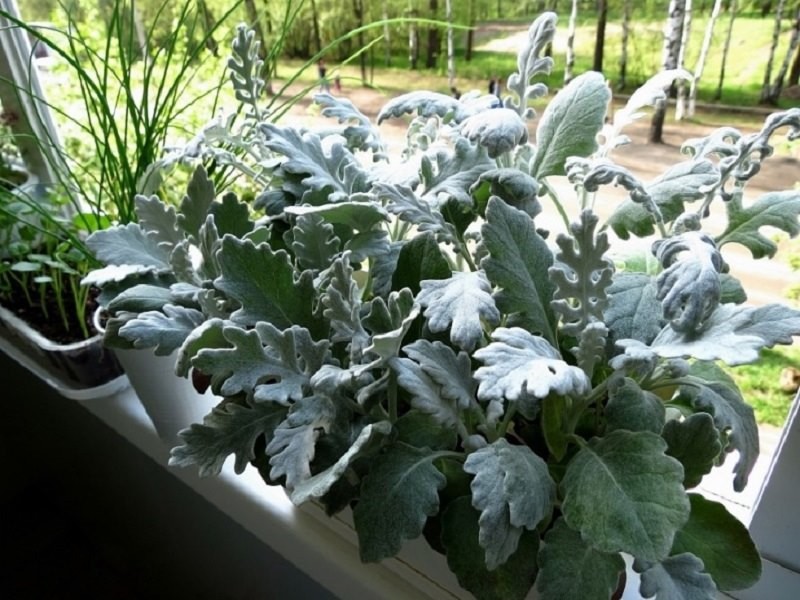
Wintering cineraria
Wintering
In severe winter conditions, it is recommended to transplant the ornamental plant into a suitable container and keep it in the house, greenhouse as a pot culture. In the southern regions, it is enough to cover with spruce branches.
Flowering cineraria
Many gardeners cut the buds straight away as they do not have a key decorative value. But there are also lovers of attractive and delicate perennial inflorescences. His inflorescences are a basket. The lingual and tubular flowers have a pleasant mustard yellow color. The diameter of the bud is 15 mm on average. The flowering process begins in June and lasts until July, lasts no more than a month.
During flowering, as well as during the growing season, you need to water and loosen on time. It is important to feed the plant with mineral fertilizers for abundant and rapid bud formation. At the end of flowering, it is important to prune.
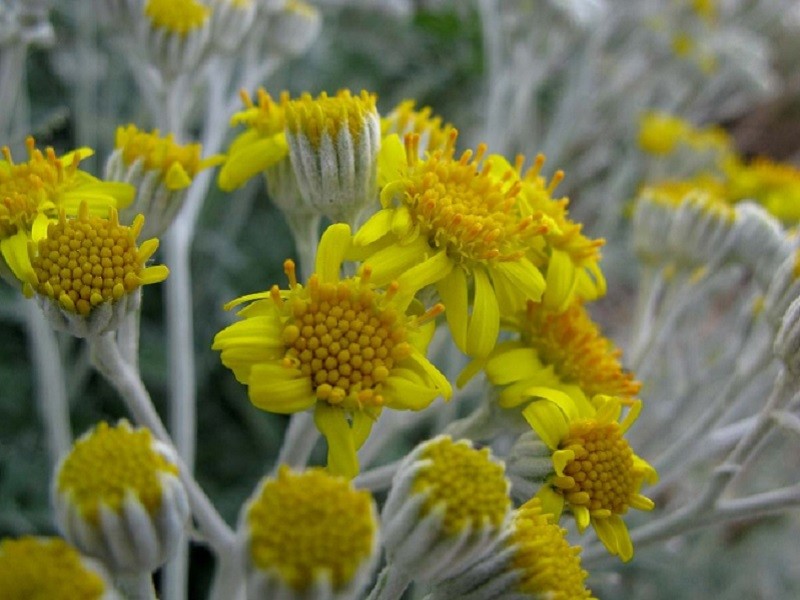
Flowering cineraria
Possible growing problems
Planting and leaving Cineraria silvery requires the right approach, otherwise the appearance of diseases and harmful invasions cannot be avoided. Among the pests dangerous for cineraria are aphids, spider mites, whiteflies. To get rid of it, it is enough to treat the bushes of the plant with insecticides.
The plant has strong immunity and the ability to quickly resist all diseases. Due to a lack or excess of moisture, different types of rot, powdery mildew, and rust may appear.Having found symptoms, you need to treat the culture with a fungicide and adjust watering.
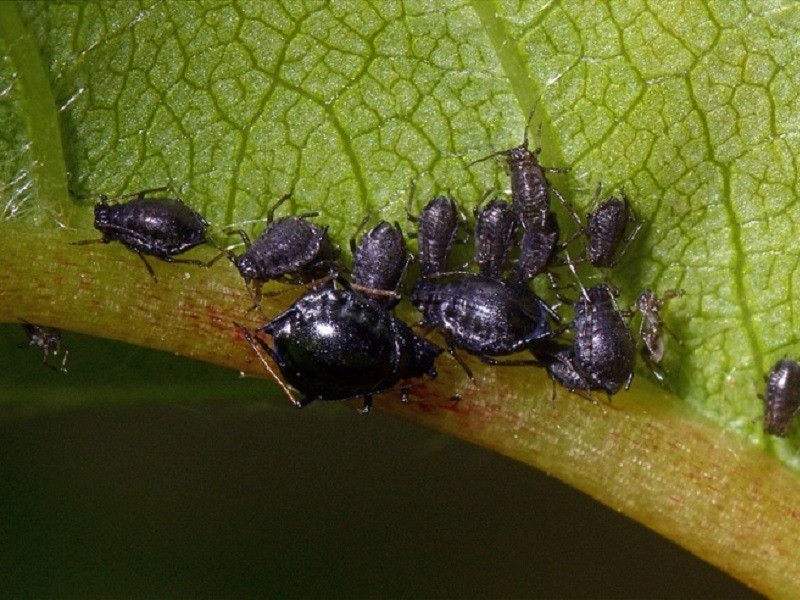
Pests on cineraria bushes
Cineraria silvery is a frequent visitor to flower beds, backyards and garden plots, but it is assigned only a secondary role of extras. It is unlikely that any other flower can boast such attractive foliage and bewitch a passer-by even without flowering. In addition, cineraria is not demanding in leaving and will be able to decorate any floral arrangement, giving charm and sophistication.

